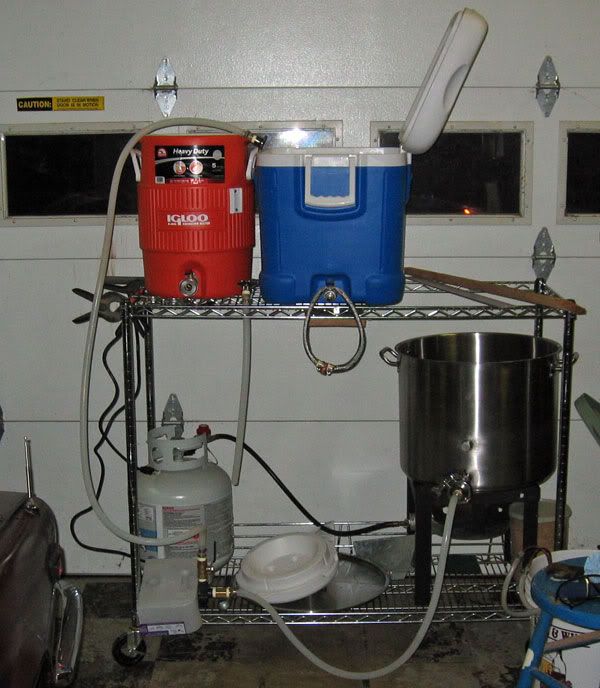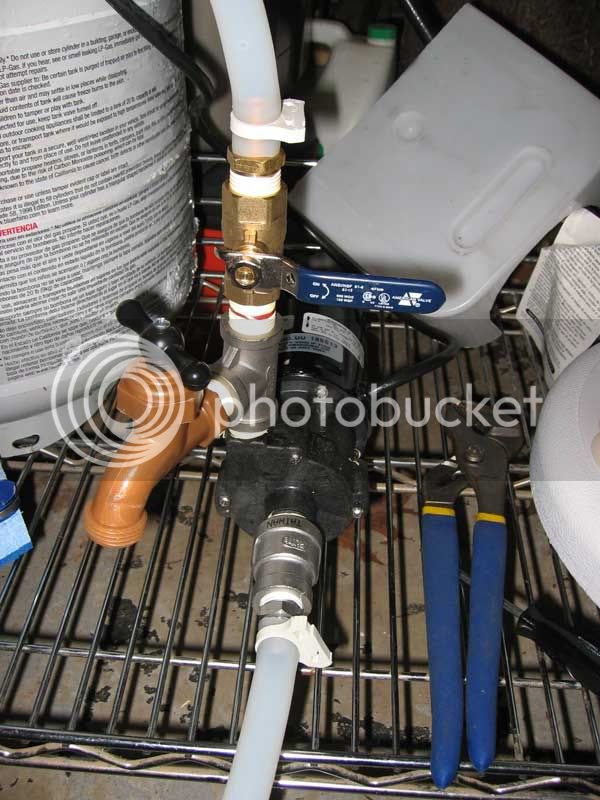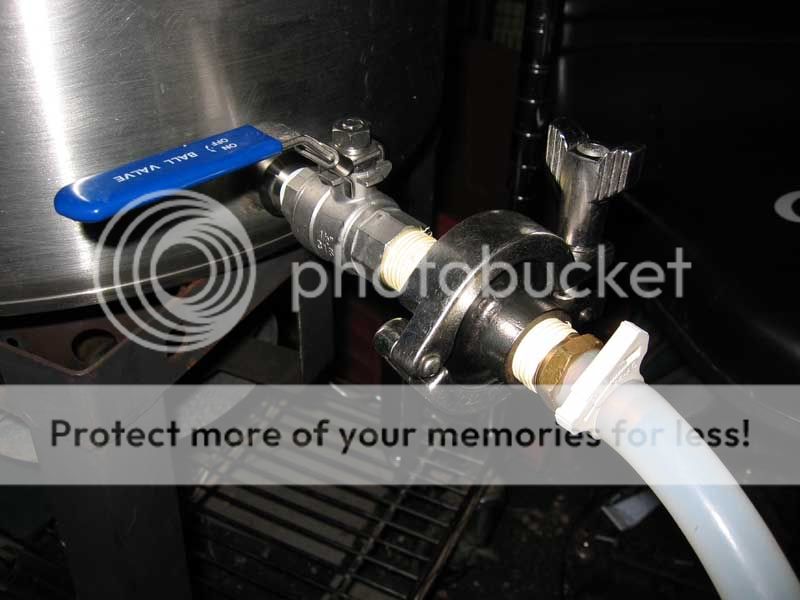nostalgia
Well-Known Member
Ok, I'm feeling pretty dumb here, so I could use a little direction.
Here's my rig. Water from the BK comes in from the right side of the picture, pump outlet is straight up with a ball valve:

So I hook up the hoses with 4 gallons of water in the BK. Open the valve on the BK and the valve on the pump. My understanding is this should prime the pump, but I think I just came to the realization why it isn't. There's still a water column in the output hose, which is higher than the BK, preventing the liquid in the BK from coming down the line. Let me try lowering that end of the hose and get back to you
While I'm doing that, are there any tricks to getting - and keeping - the pump primed? Lowering the output end of the hose may not always be feasible, like if I'm using it to recirculate boiling wort.
Thanks!
-Joe
Here's my rig. Water from the BK comes in from the right side of the picture, pump outlet is straight up with a ball valve:

So I hook up the hoses with 4 gallons of water in the BK. Open the valve on the BK and the valve on the pump. My understanding is this should prime the pump, but I think I just came to the realization why it isn't. There's still a water column in the output hose, which is higher than the BK, preventing the liquid in the BK from coming down the line. Let me try lowering that end of the hose and get back to you
While I'm doing that, are there any tricks to getting - and keeping - the pump primed? Lowering the output end of the hose may not always be feasible, like if I'm using it to recirculate boiling wort.
Thanks!
-Joe






